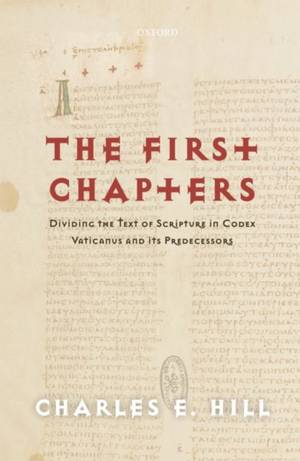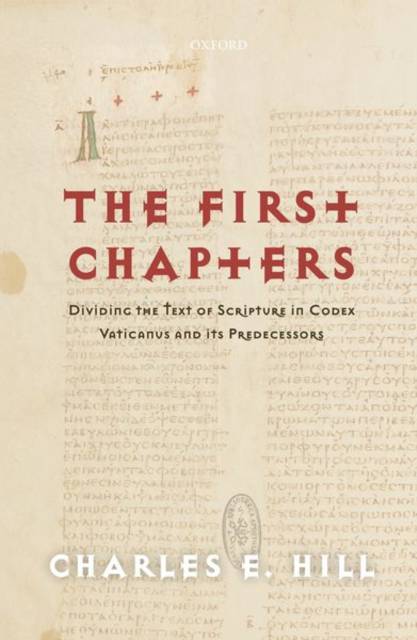
- Afhalen na 1 uur in een winkel met voorraad
- Gratis thuislevering in België vanaf € 30
- Ruim aanbod met 7 miljoen producten
- Afhalen na 1 uur in een winkel met voorraad
- Gratis thuislevering in België vanaf € 30
- Ruim aanbod met 7 miljoen producten
Zoeken
The First Chapters
Dividing the Text of Scripture in Codex Vaticanus and Its Predecessors
Charles E Hill
Hardcover | Engels
€ 217,95
+ 435 punten
Omschrijving
The First Chapters uncovers the origins of the first paragraph or chapter divisions in copies of the Christian Scriptures. Its focal point is the magnificent, fourth-century Codex Vaticanus (Vat.gr. 1209; B 03), perhaps the single most significant ancient manuscript of the Bible, and the oldest material witness to what may be the earliest set of numbered chapter divisions of the Bible. The First Chapters tells the history of textual division, starting from when copies of Greek literary works used virtually no spaces, marks, or other graphic techniques to assist the reader. It explores the origins of other numbering systems, like the better-known Eusebian Canons, but its theme is the first set of numbered chapters in Codex Vaticanus, what nineteenth-century textual critic Samuel P. Tregelles labelled the Capitulatio Vaticana. It demonstrates that these numbers were not, as most have claimed, late additions to the codex but belonged integrally to its original production. The First Chapters then breaks new ground by showing that the Capitulatio Vaticana has real precursors in some much earlier manuscripts. It thus casts light on a long, continuous tradition of scribally-placed, visual guides to the reading and interpreting of Scriptural books. Finally, The First Chapters exposes abundant new evidence that this early system for marking the sense-divisions of Scripture has played a much greater role in the history of exegesis than has previously been imaginable.
Specificaties
Betrokkenen
- Auteur(s):
- Uitgeverij:
Inhoud
- Aantal bladzijden:
- 512
- Taal:
- Engels
Eigenschappen
- Productcode (EAN):
- 9780198836025
- Verschijningsdatum:
- 25/04/2022
- Uitvoering:
- Hardcover
- Formaat:
- Genaaid
- Afmetingen:
- 157 mm x 231 mm
- Gewicht:
- 975 g

Alleen bij Standaard Boekhandel
+ 435 punten op je klantenkaart van Standaard Boekhandel
Beoordelingen
We publiceren alleen reviews die voldoen aan de voorwaarden voor reviews. Bekijk onze voorwaarden voor reviews.











